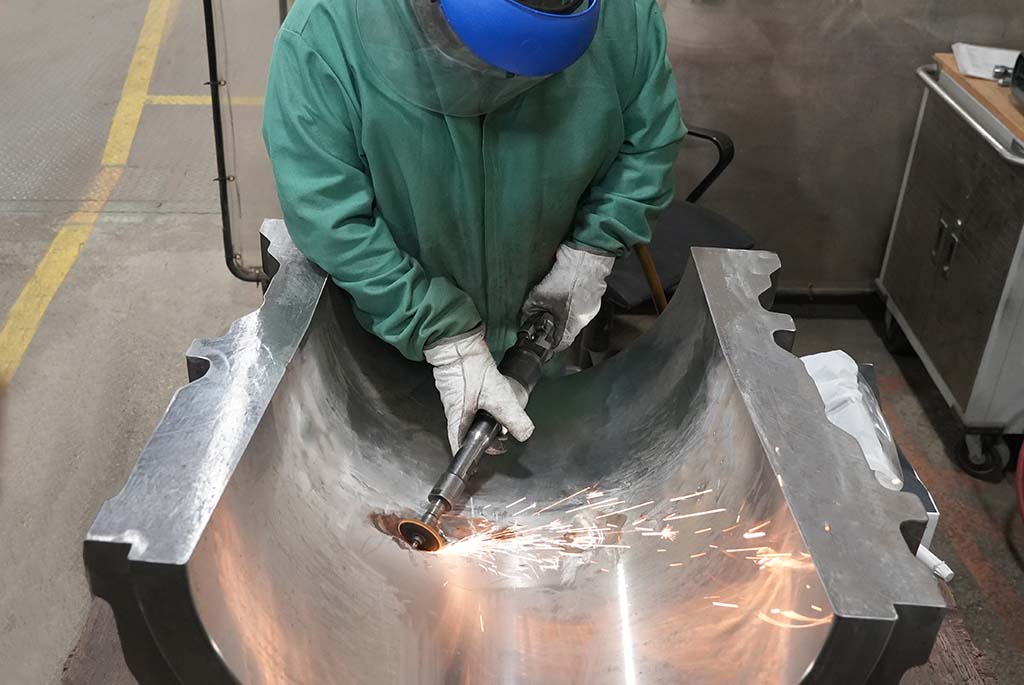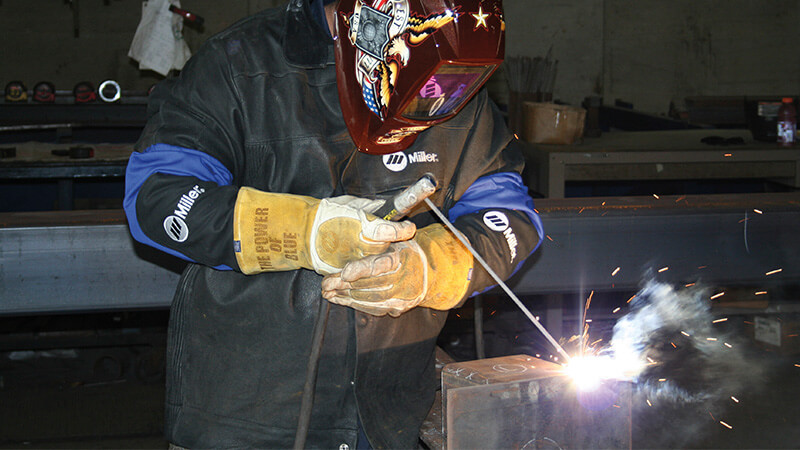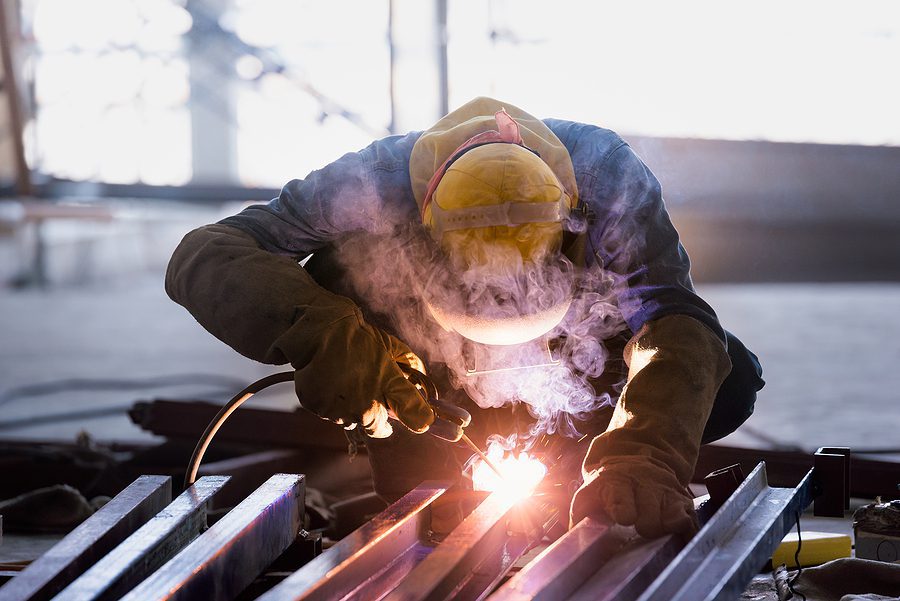Usual Welding Repair Work Issues and Just How to Address Them Successfully
Welding repair work usually experience a variety of issues that can threaten the honesty of the end product. Common problems consist of inadequate penetration, porosity, and misalignment, to name a few. Each flaw provides one-of-a-kind obstacles that call for details strategies for resolution. Comprehending these problems is vital for welders aiming to boost their skills and outcomes. This discussion will certainly explore these typical welding fixing issues and efficient approaches to address them.
Inadequate Penetration
Insufficient penetration happens when the weld steel fails to totally fuse with the base product, resulting in weak joints and possible architectural failures. This problem commonly comes from insufficient warm input, incorrect electrode angle, or improper welding rate. Welders might run into poor infiltration due to a mistake of the essential criteria for a details material density or kind. In addition, contamination on the base material's surface can impede efficient bonding, aggravating the problem. To address insufficient penetration, welders ought to guarantee ideal setups on their devices and maintain a clean work surface. Routine inspection of welds is advised to recognize any deficiencies early, enabling prompt modifications and the prevention of endangered architectural integrity in bonded assemblies.
Porosity
Porosity is a common defect in bonded joints that manifests as small gas bubbles entraped within the weld metal. This defect can jeopardize the integrity of the weld, leading to decreased stamina and potential failure under anxiety. Fabrication. Porosity typically arises from contamination, dampness, or improper welding methods, which enable gases to run away into the liquified weld pool. To address porosity, welders should assure proper surface area prep work, keep a clean workplace, and utilize suitable welding criteria. Additionally, selecting the ideal filler material and securing gas can minimize gas entrapment. Routine assessment and testing of welds can assist recognize porosity early, assuring timely restorative activities are taken, therefore maintaining the high quality and dependability of the bonded framework
Imbalance
Imbalance in welding can arise from numerous aspects, consisting of inappropriate setup and thermal development. Comprehending the origin is essential for reliable resolution. A number of improvement methods are readily available to straighten parts and assure structural honesty.
Sources of Misalignment
Welding imbalance frequently originates from a selection of underlying problems that can compromise structural integrity. One key reason is incorrect fit-up of elements prior to welding, which can bring about spaces and irregular surface areas. Variations in thermal growth throughout the welding process can likewise lead to distortion, particularly if the products being signed up with have various coefficients of growth. Additionally, inadequate clamping and fixturing might fail to hold components safely in location, bring about movement during welding. Badly conserved equipment, including welding machines and tools, might present variances in the weld grain, additional adding to misalignment. Operator mistake, stemming from not enough training or experience, can also play a significant function in creating misaligned welds.

Correction Techniques Readily Available
Attending to imbalance effectively requires a mix of rehabilitative methods tailored to the specific concerns at hand. One usual approach is making use of jigs or fixtures to hold components in the appropriate placement during welding, making certain regular alignment. In addition, pre-heating the products can help decrease distortion and boost fit-up. For considerable imbalance, mechanical adjustment methods, such as making use of hydraulic jacks or clamps, can be employed to fix the setting before welding. Post-weld warm treatment may likewise be necessary to eliminate tensions brought on by misalignment. Lastly, mindful assessment and modification during the arrangement phase can avoid imbalance problems from ending up being substantial troubles, advertising a smoother welding procedure and improving total structural integrity.
Distortion
Distortion is a typical obstacle in welding that can occur from numerous variables, consisting of unequal heating and cooling. Understanding the root causes of distortion is essential for carrying out effective prevention methods. Resolving this issue not only boosts structural stability but also boosts the total high quality of the weld.
Sources of Distortion
When subjected to the intense warm of welding, products typically undergo modifications that can lead to distortion. This phenomenon mainly occurs from thermal growth and tightening throughout the welding procedure. As the weld location warms up, the product increases; upon cooling, it gets, which can create interior stresses. Furthermore, uneven heating throughout a workpiece can aggravate these anxieties, leading to bending or flexing. The type of product additionally plays a significant duty; steels with varying thermal conductivity and coefficients of expansion may respond in a different way, causing unpredictable distortions. Additionally, bad joint design and inadequate fixturing can add to misalignment throughout welding, boosting the probability of distortion. Comprehending these causes is crucial for reliable welding repair service and avoidance strategies.
Prevention Techniques
Effective avoidance strategies for distortion during welding focus on controlling warm input and guaranteeing correct joint layout. Keeping a constant warmth input aids to lessen thermal development and tightening, which can result in distortion. Utilizing methods such as preheating the work surface can additionally minimize the temperature slope, advertising uniform heating. Furthermore, picking suitable joint designs, such as T-joints or lap joints, can boost security and decrease anxiety concentrations. Applying appropriate fixturing to protect the workpieces in position even more aids in preserving positioning during the welding process. Staggered welding sequences can distribute warm much more evenly, protecting against localized distortion. By using these techniques, welders can substantially reduce the probability of distortion and enhance the sites overall top quality of their welds.
Cracking
Breaking is a typical problem run into in welding repairs, commonly arising from numerous factors such as incorrect air conditioning prices, material option, or insufficient joint prep work. The event of splits can greatly compromise the honesty of the weld, leading to prospective failings throughout procedure. To address this problem, welders have to first analyze the source, ensuring that products are compatible and properly selected for the specific application. Additionally, regulating the air conditioning price throughout the welding procedure is necessary; quick air conditioning can induce tension and bring about splitting. Correct joint layout and prep work likewise add to minimizing the risk. Executing these techniques can improve weld top quality and sturdiness, inevitably minimizing the chance of splitting in ended up weldments.

Incomplete Blend
A substantial issue in welding repairs is insufficient fusion, which takes place when the weld metal does not sufficiently bond with the base material or previous weld passes - Montana Mobile Welding and Repair. This flaw can cause weaknesses in the joint, potentially jeopardizing the stability of the bonded structure. Factors adding to incomplete blend include not enough warmth input, improper welding strategy, and contamination of the surfaces being joined. To resolve this concern successfully, welders ought to assure correct pre-weld cleaning and surface preparation, in addition to readjust their welding specifications to achieve appropriate penetration and fusion. Regular assessment throughout the welding process can additionally assist determine incomplete blend early, enabling for prompt restorative measures to enhance the overall quality of the weld
Overheating
While welding repair work can improve structural honesty, overheating provides a considerable challenge that can bring about product destruction. Extreme warmth throughout welding can modify the mechanical residential or commercial properties of metals, causing reduced stamina, raised brittleness, and bending. This phenomenon is especially vital in high-stress applications where structural integrity is paramount. Recognizing overheating can entail aesthetic inspections for staining or distortion, along with checking temperature level during the welding procedure. To mitigate the threats related to getting too hot, welders ought to utilize proper strategies, such as regulating warm input, changing travel speed, and making use of ideal filler materials. Additionally, carrying out pre- and post-weld warm treatments can aid restore product residential properties and boost the total high quality of the repair work, making sure long-lasting efficiency and security.
Regularly Asked Questions
What Are the Usual Signs of a Welding Issue?

How Can I Examine My Welds for High quality?
To examine welds for high quality, one can make use of aesthetic examinations, ultrasonic testing, and radiographic approaches. Each strategy ensures structural integrity, recognizes defects, and verifies adherence to specified requirements, eventually boosting smart welds the reliability of the bonded joints.
What Safety and security Precautions Should I Take While Welding?
When welding, Check Out Your URL one should focus on safety by putting on suitable personal protective equipment, making sure correct ventilation, safeguarding flammable materials away, maintaining a tidy work space, and understanding environments to stop injuries and mishaps.
Can I Repair a Weld Without Redoing the Entire Joint?
Repairing a weld without redesigning the entire joint is possible, relying on the damages (Montana Mobile Welding and Repair). Methods such as grinding, including filler material, or utilizing a welding process can properly resolve specific defects while maintaining the bordering structure
What Devices Are Essential for Reliable Welding Fixes?
Important devices for efficient welding repair services consist of a welding device, cord brush, grinder, safety gear, clamps, and filler materials. Each device plays a crucial function in guaranteeing top quality and safety during the repair procedure. Porosity normally develops from contamination, dampness, or inappropriate welding strategies, which allow gases to get away right into the molten weld pool. Inadequately conserved devices, consisting of welding equipments and tools, might introduce disparities in the weld bead, more contributing to misalignment. When subjected to the intense warm of welding, materials typically undertake changes that can lead to distortion. Breaking is a common problem run into in welding repair services, usually resulting from various elements such as improper cooling rates, material selection, or insufficient joint prep work. A considerable concern in welding fixings is insufficient fusion, which happens when the weld metal does not adequately bond with the base product or previous weld passes.